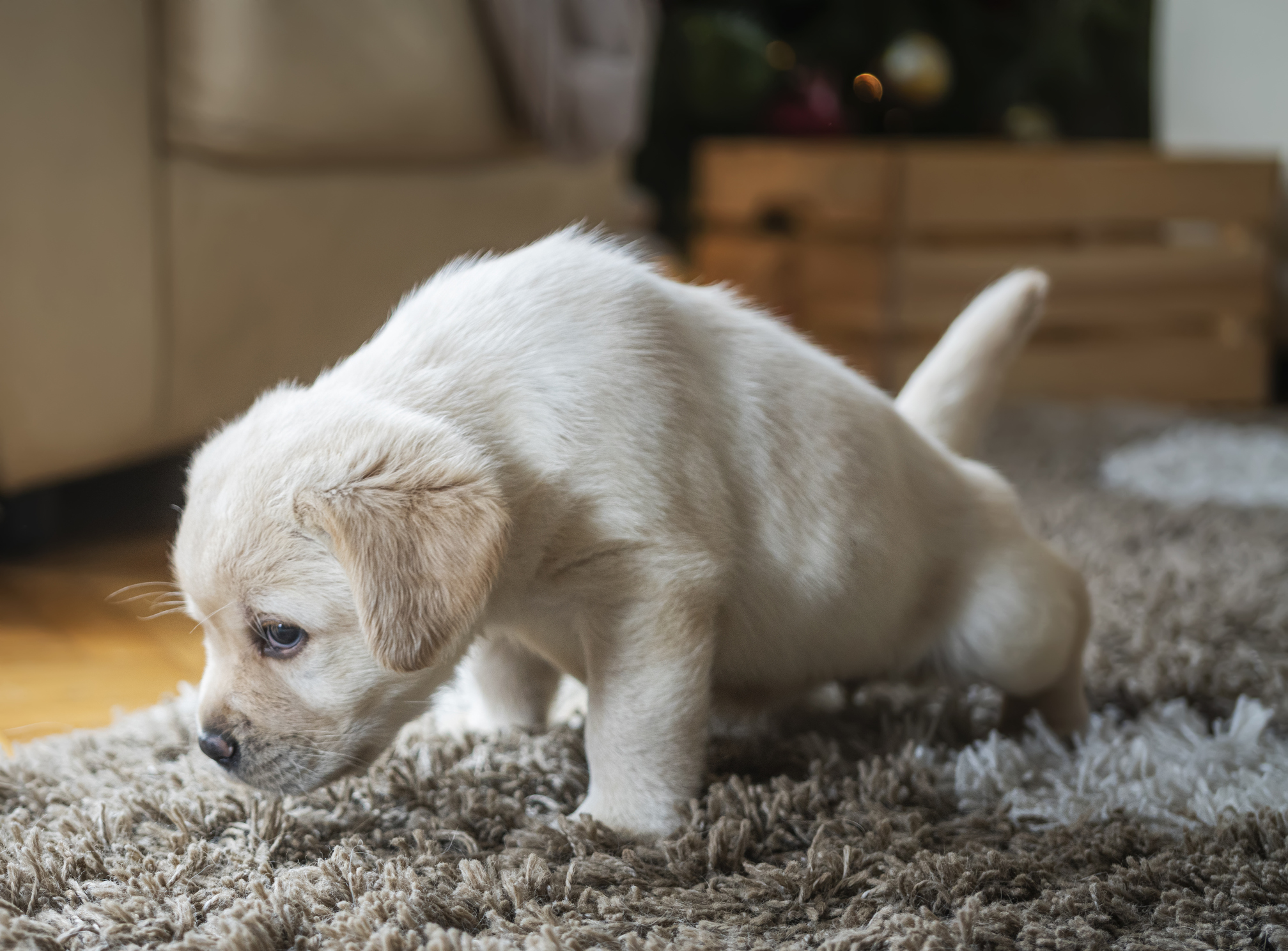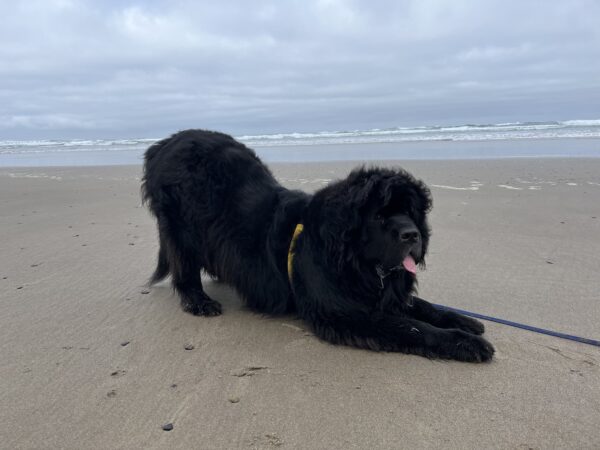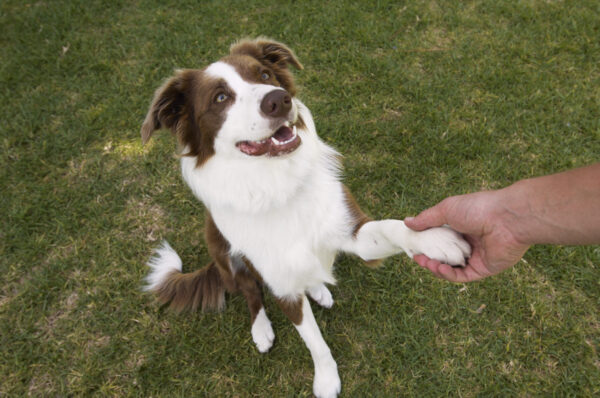Marking in the house makes for a smelly and frustrating issue that’s challenging for dog lovers to address. The key to stopping a dog’s marking is to understand your dog’s motivations for peeing inside. Then, consistently utilize positive reinforcement training methodologies and management to prevent the marking behavior.
Let’s start with the first step: Figuring out the why behind the behavior.
Why is my dog marking in the house?
Although your dog lifting a leg on your couch, wall or in the corner of the living room isn’t ideal, urine marking is a very natural behavior for dogs, who experience the world through their noses and leave their scent behind as a form of communication: I’ve been there or this is my territory.
Many people assume that only male dogs, and specifically intact males, urine mark their territory. This isn’t the case. Male and female dogs urine mark, regardless if they are spayed or neutered. Some female dogs even lift their legs to mark.
The main reasons your dog marks in the house are:
- Your dog is trying to tell other dogs or animals the house is part of his territory
- To communicate and manage his feelings about changes or stressors in the home: rearranging furniture, moving to a new space, new schedules or family members moving in or out
- Medical issue, such as a urinary tract infection
- Smell trigger from urine on the carpet
The 6 steps to stop your dog from marking in the house
Step 1: Rule out a medical issue.
Take a trip to the vet, who will rule out any health conditions that’s causing your dog to have the urge to pee. Once this is ruled out, you know the marking is likely behavioral and it’s time to start working with your dog.
Step 2: Understand triggers.
Pay attention to when and where your dog starts to mark — somewhere new, when another dog or animal has been in the home, new furniture or returning to the same location again and again. Once you can anticipate the behavior, you can prevent and interrupt the behavior.
Step 3: Supervise.
Keep your dog in sight as often as possible, especially if he hang outs in an area of the house where he tends to mark, to intervene before he acts. Redirect him before he lifts a leg or squats. If you can’t fully supervise, keep him confined to a crate or dog-proofed room with an easy-to-wash floor in case an accident happens.
Step 4: Redirect.
If you notice your dog sniffing the wall or furniture, use treats and toys to redirect him away from that area and bring him outside to potty. Redirecting your dog before marking is far more effective than trying to interrupt your dog once he starts and it reduces the frequency of future marking attempts. When your dog moves away from the area he was sniffing/about to mark, praise and encourage with treats and toy play.
Step 5: Manage your environment.
Baby gates or tethering your dog to you with a leash around the house keeps your dog near you and in sight. Daily routine management is also important. When your dog wakes up from a nap or seems restless, direct him outside to potty. Back inside, continue supervising and redirect your dog away from the area he wants to mark.
Step 6: Prevention.
For determined markers, wearing a diaper or belly band works as a preventative measure. Dogs don’t like the sensation of being wet, so most won’t try to mark with the diaper on. Only use the diaper or belly band when you are nearby and able to intervene if your dog becomes stressed, distressed or entangled and regularly check that it’s not wet. When damp, change it right away to prevent irritation and discomfort. To protect your carpet, small, easy-to-wash area rugs and towels protect regularly marked areas.
Click here for more cleaning tips for dog parents.
Other tips to stop dogs marking in the house
Additional tips to help as you work with your dog, include:
Encourage outdoor marking:
Provide an outlet for this natural marking behavior by giving your dog plenty of space and opportunity to urine mark in appropriate locations outside. Don’t rush your dog while walking; give him a chance to stop to pee.
Clean thoroughly:
Clean up any accidents that do happen. If your dog smells pee, he’s more likely to continue trying to urinate in that location. The better you can clean and neutralize the urine smell, not just cover it up, the less likely your dog will continue to smell urine in that location and return to continue marking.
Don’t punish:
As frustrating as marking in the house is, we don’t want to punish our dogs for peeing/marking. Instead, take him directly outside and then thoroughly clean the area. Think through what might have triggered the marking behavior and keep a closer eye on your dog.





